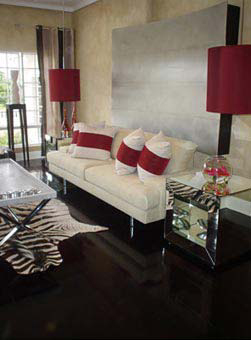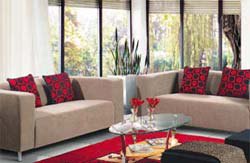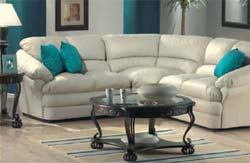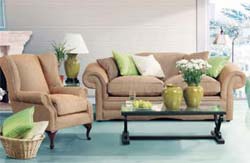Furnishing your new home
Before you jump right in - the first thing to do when decorating a new home or living space is to discuss with your spouse or family members what your priorities, likes and dislikes are.
You might want to furnish a fabulous master bedroom with ensuite, walk-in wardrobe, mini-gym and retreat but your partner may decide the study or home theatre are the priorities. A master plan should be worked out early, prioritising areas and gradually working through them.
Furnishing a home from scratch will require careful planning, both financially and stylishly, no matter what your budget. Be realistic about how much you want to spend and do your research. Ideally, when building a new home, the layout for furniture and furnishings should be included in your floor plans so there are no nasty surprises when you install them.
When selecting furnishings, follow the architectural style of the space and determine the function of each room. Decide how the space will be used and select furnishings accordingly. Don t just go for visual appeal comfort is paramount.
The first things to consider in any interior design scheme are the floors and walls, especially if you re going for colour. Neutral backgrounds are always easier to work with and can allow you to add and subtract colour from other areas, such as loose furnishings like rugs, cushions, throws, accessories and even loose upholstery covers. The beauty of this is that you can change your look to mirror the seasons.
Once you 've decided on the floors and walls, you can look at items such as rugs, curtain and upholstery fabrics. If you plan to use feature-colour walls, always select your fabrics first as it s much easier to mix paint colours to match fabrics than to do it the other way around.
The ideal order to follow is:
1. Floor covering
2. Window covering
3. Wall colour
4. Sofas and chairs
5. Dining table and chairs
6. Occasional furniture
7. Bedroom furniture
8. Accessories
When choosing paint colours, take your time and select tones that enhance your furnishings and make you feel relaxed and comfortable. Living rooms should be tranquil and serene, as should bedrooms. Dining rooms and rooms used less frequently can be treated more daringly red dining rooms increase the appetite and make for a great party mood! If you are lucky enough to live in a period-style house with high ceilings, you can be adventurous with your cornices.
Period homes just beg for colour. However, if you live in a compact suburban home, stick to white. Remember, colour draws the eye in and if you have lots of painted cornices and architraves, the effect could look cluttered. Remember, less is more .
Large open houses allow for the outdoors to come inside. Don t overdo the furnishings. Choose a few good-quality pieces such as sofas, coffee table, dining setting and rug. Built-in furniture is a great way to provide additional storage for books, ornaments and assorted paraphernalia and can add to the spaciousness within. Scale and proportion also need to be considered. For example, large pieces of furniture in small rooms are a no-no .
In classic-style homes, colour can again be used to great effect and it is quite the norm to have each room designed around a different colour scheme. However, if you have a contemporary or very modern open-plan home, the colour scheme throughout should be uniform light background hues are preferable but you can accent them with coloured feature walls, especially in dining rooms, living rooms and bedrooms.
Window furnishings can make or break a room. Undressed windows can look naked, but if you have a spectacular view framed by great architectural detail they may be left bare. If you have an issue with heating or cooling, simple solar blinds may be the answer. Modern homes suit blinds and shutters, but you can still use curtains in bedrooms or formal rooms. If you just can t live without curtains, simple sheer fabrics with plenty of gathers may suffice. It all depends on the architecture and your needs. If privacy is a factor, blinds behind sheer curtains may be a good solution, but if your home begs for elaborate drapery, then bring it on!
When selecting fabrics for upholstery, contrasting and complementary textures and colours are more interesting, even in modern homes. Suitability, durability and cost always determine the selection of material; don t put the delicate silk on the family room sofa! If you choose leather, be sure you understand the different qualities.
Follow your own style; don t try to create a magazine home. Eclectic decorating is much more appealing and long lasting than slavishly following some latest trend.
Try interesting paint finishes, too. Decorative finishes look wonderful if they are done well. These can be simple sponged or rolled finishes to elaborate Venetian plaster or trompe loeil.
When selecting fabrics for upholstery, contrasting and complementary textures and colours are more interesting, even in modern homes. Suitability, durability and cost always determine the selection of material; don’t put the delicate silk on the family room sofa! If you choose leather, be sure you understand the different qualities.
source: janice anderssen - images: fahrenheit design / furniture city




